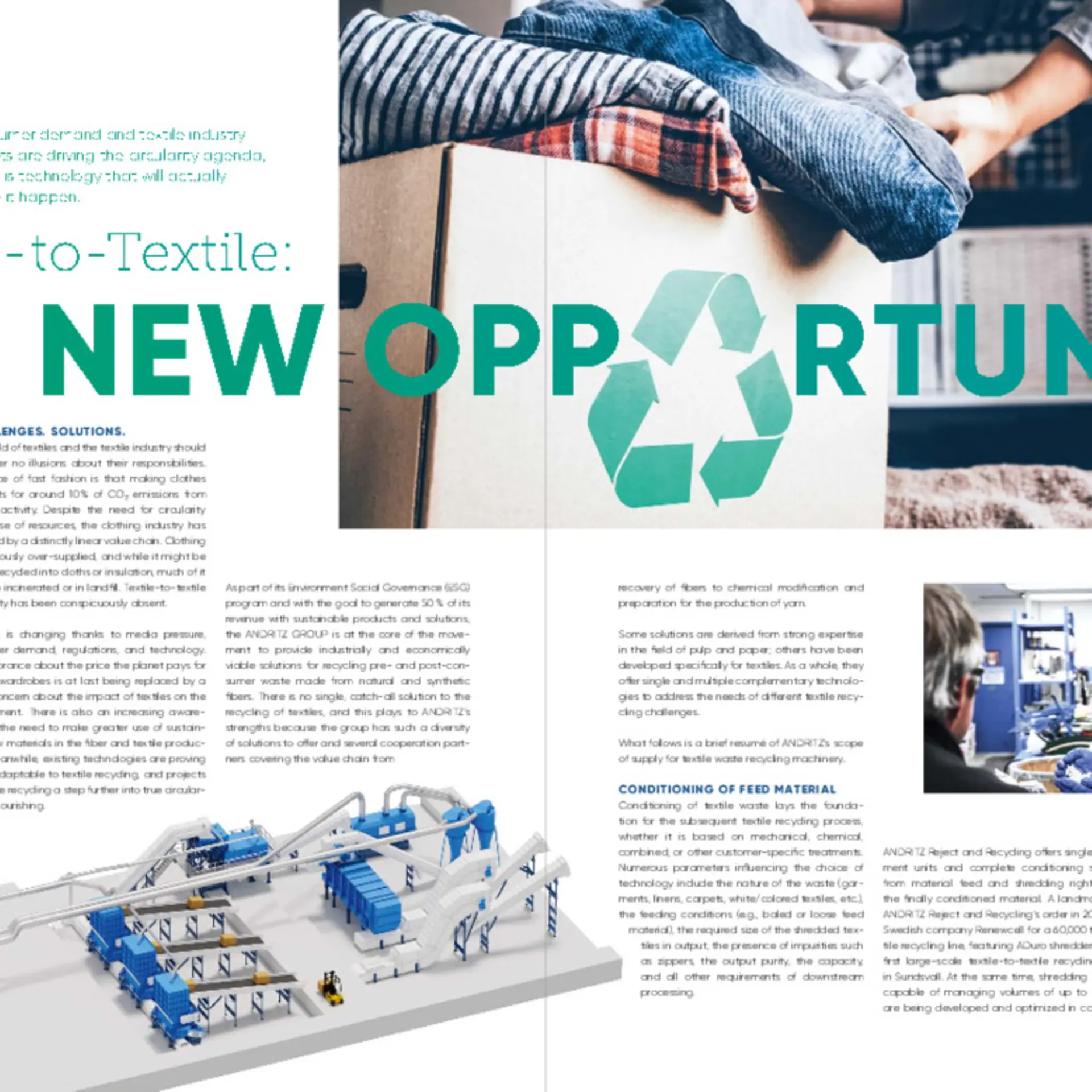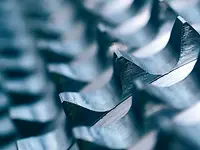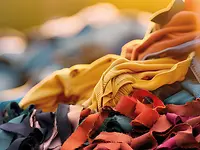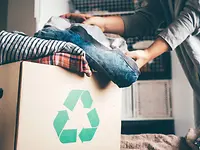NOW WE CAN UPCYCLE, TOO
The key textile brands are strongly motivated to find circular solutions and are especially keen to add recycled fiber to their clothes. So far, recycling of post-consumer textile waste has been limited to the production of lower quality/value products, such as cleaning rags, in a “downcycling” process. Although downcycling is an important part of the complete recycling process, textile waste can now find new life as textile yarn, in an “upcycling” process, and be turned into a product of equal, if not better, quality and value.
With this addition of upcycling opportunities to existing downcycling processes, we are seeing a parallel evolution in recycling. The effect on feed material conditioning is that we need to be even more precise in the way we carry out sorting and shredding to create high-quality secondary textile material for subsequent textile recycling process steps. Fiber length, for example, which affects fiber strength, depends on the downstream process, and there are contaminants to manage, attached to the textiles, such as zippers and buttons, and external ones like bale wires. Overall, we are consistently improving process steps with purity up and textile loss down.
The choice for the customer is how many process steps they want to include from an investment and capacity point of view. We are here to help ensure the most suitable technology is applied. The ART Center (ANDRITZ Recycling Technology Center) is a valuable tool to achieve this, where shredding is tested in combination with the separation technique and optimized together according to the customer’s material and process requirements.
Michael Waupotitsch and Anastasia Zefkili





















